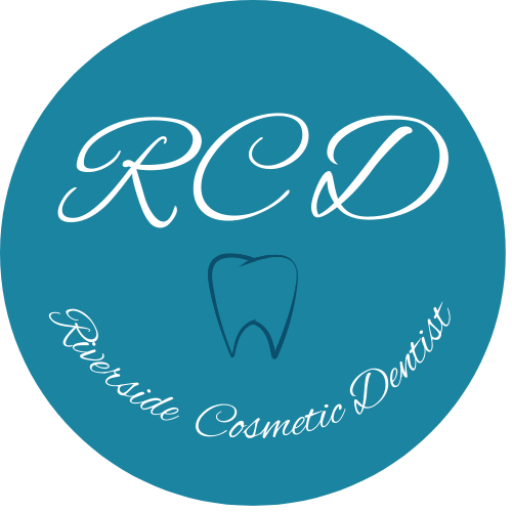Riverside Tooth Decay
Tooth decay is damage to your tooth’s enamel. Bacteria, diet, and oral hygiene can contribute to dental decay. There are a number of dental diseases that tooth decay can unleash, if left untreated. The good news is that we can reduce or help treat tooth decay in Riverside, California. If you think you have symptoms of dental decay, contact Riverside Cosmetic Dentist – Dr. Ali Shmara for your dentist appointment.

Causes of Tooth Decay
Are you concerned about tooth decay in Riverside? Tooth decay occurs when acids break down the protective enamel on your teeth. If left untreated, this damage can become irreversible, leading to cavities and other dental issues. Here are the most common causes of tooth decay in Riverside:
1. Oral Bacteria
Your mouth naturally contains bacteria that metabolize sugars and produce acids that can contribute to tooth decay. These acids attack your tooth enamel, initiating the process of decay. Regular dental check-ups at our Riverside dental office can help manage bacteria levels and prevent decay.
2. Diet
A diet high in sugary and starchy foods provides fuel for harmful bacteria that caused tooth decay. These bacteria produce acids that damage your tooth enamel. Limiting sugary snacks and choosing a tooth-friendly diet are essential steps to protect your teeth. Our Riverside team can offer personalized dietary advice to help you reduce your risk of tooth decay.
3. Poor Oral Hygiene
Skipping brushing and flossing leaves food particles and plaque on your teeth that can cause tooth decay. Over time, plaque hardens into tartar, which contributes to tooth decay. Regular professional cleanings at our Riverside practice remove tartar and keep your teeth healthy.
Dental Diseases Caused by Tooth Decay
Tooth decay, if left untreated, can lead to a variety of oral and systemic health issues. Tooth decay can contribute to:
1. Cavities (Dental Caries):
The most immediate consequence of tooth decay is the formation of cavities, which are permanent holes in the teeth caused by the breakdown of enamel.
2. Pulpitis:
When tooth decay reaches the inner layer of the tooth (the pulp), it can cause inflammation, leading to pain and sensitivity. This condition is known as pulpitis, and if severe, it may require a root canal treatment.
3. Abscesses:
Untreated cavities or advanced decay can lead to a dental abscess—a pocket of pus caused by bacterial infection. This can result in severe pain, swelling, and even fever.
4. Periodontal (Gum) Disease:
Tooth decay often contributes to gum disease, particularly when plaque buildup at the gumline isn’t addressed. Gum disease, in turn, can lead to receding gums, tooth loss, and even bone loss in the jaw.
5. Tooth Loss:
Advanced decay can weaken the structure of the tooth, making it impossible to save. This can lead to tooth loss and impact your ability to eat and speak properly.
6. Sinus Infections:
Dental decay in the upper molars can sometimes spread to the sinus cavities, leading to sinus infections and discomfort.
Our Reviews

He is always a referral for any of my friends and family wanting good professional work done. This handsome man is the MVP of Dental work, thanks again, enjoy your holiday.
Your office has such a nice atmosphere and your staff are very friendly and helpful.
Halina R
Tooth Decay Treatment in Riverside
Dental Fillings
How It Works: The dentist removes decayed portions of the tooth and fills the cavity with materials like composite resin, amalgam, or ceramic.
Who It’s For: Best for teeth with visible cavities that haven’t affected the inner pulp.
Root Canal Therapy
How It Works: For advanced decay that has reached the tooth’s pulp, a root canal is performed to remove the infected pulp, clean the canals, and seal the tooth.
Who It’s For: Patients with severe toothache, abscesses, or pulp infections.
Dental Crowns
How It Works: A crown is placed over a tooth that has extensive decay to protect and restore its function.
Who It’s For: Ideal for cases where the tooth structure is weakened or after a root canal.
Tooth Extraction
How It Works: Severely decayed teeth that cannot be saved are extracted to prevent further complications.
Who It’s For: Necessary for advanced decay that causes damage beyond repair.
Symptoms of Tooth Decay in Riverside
The symptoms of tooth decay can vary depending on its stage. Here’s a breakdown of common signs to watch out for:
Early Symptoms of Tooth Decay
White Spots on Teeth:
The earliest sign of decay appears as chalky white spots, indicating mineral loss in the enamel.
Tooth Sensitivity:
You may experience mild sensitivity when eating or drinking hot, cold, or sweet items.
Visible Discoloration:
Yellow, brown, or black spots may appear on the tooth surface.
Advanced Symptoms of Tooth Decay
Toothache or Pain:
Persistent or intermittent tooth pain is a common symptom as the decay progresses deeper into the tooth.
Cavities (Holes or Pits):
Visible holes or pits in the tooth surface are a clear sign of decay.
Sensitivity to Pressure:
Pain or discomfort when biting down or chewing may occur as the tooth structure weakens.
Bad Breath (Halitosis):
Decay-causing bacteria can produce foul-smelling odors, leading to chronic bad breath.
Swelling or Pus:
In severe cases, an abscess may form, leading to swelling, pus, or tenderness around the affected tooth.
Gum Irritation:
Decay near the gumline can cause redness, swelling, or irritation in the surrounding gums.









